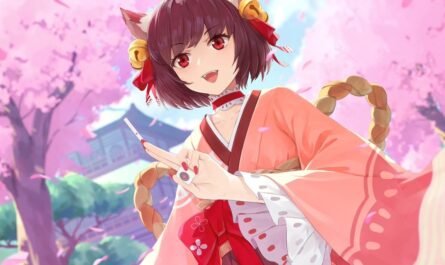Aiken (Arakawa-Ku, Tokyo), an animation production company, produces “Sazae-san,” which holds the Guinness World Records as the longest-running TV anime globally for more than half a century. He has made many works such as “Tetsujin 28-go”, “Glass Mask,” and “Bonobono.” Let’s look back on the company’s activities, which can be said to be the history of the animation industry.
At first, not an animation company.
The history of Aiken is Nippon Television, which was established by Yanase, an automobile importer, in 1952. While importing and selling TV receivers, we started the commercial production business in 1953 in anticipation of future demand. At the same time, we will also work on animation for TV commercials. Many works such as Suntory’s “Torys Whiskey” and Momoya’s “Morihei” series will be released worldwide.
Then, in 1963, the company’s first serial TV animation, “Sennin Buraku,” was started, and in the same year, “Tetsujin 28” and “Eight-Man” were also developed. It was a black-and-white television, but in 1968, the colour animation “Sasuke” was released to the world. And from 1969, “Sazae-san” started.
In the same year, Nippon Television changed its name to TCJ. The movie department of the company became independent as a new company, “TCJ Video Center,” and Hidenori Murata, the director of the movie department, became the new president. And in 1973, the TCJ Video Center changed its name. Murata’s name “Eiken” is read aloud as “Aiken” and continues to the present day.
“Sazae-san” The difficulty of long-term broadcasting.
“Sazae-san,” which can be said to be Aiken’s signboard animation, is based on Machiko Hasegawa’s four-frame manga. Although the anime broadcasts three episodes every week, it seems that one or more originals are always used in one episode. When broadcasting lasts for half a century, the tools used by people, such as telephones, change with the times, so we try not to make them feel uncomfortable. Although there are some difficulties unique to long-term broadcast works, you consider every detail. It might be interesting to think about home appliances and TVs.
Furthermore, the touch is different at the beginning of the animation “Sazae-san,” so the point is that it seems fresh when you look at it now.
The familiar nationwide opening was the first broadcast in January 1974 at Kenrokuen in Kanazawa City, Ishikawa Prefecture. The prefectures also change every six months, and it seems that they broadcast four patterns a year according to the season. As mentioned above, as a general rule, three episodes are broadcast per day, so it is about to reach 8000 episodes soon. I have felt the weight of history for more than half a century.
As an aside, when I interviewed the company before, many employees came to the office even though I visited in the morning. When I went to another animation production company, I was accustomed to seeing almost no people because I worked until midnight even if I visited for coverage around noon, so I asked a question. Then, he said, “To make a family-friendly animation, the person who makes it must live the same life as an ordinary member of society. Therefore, take a break and avoid staying up all night. Otherwise, you will not be able to make it for a long time.” I remember.
A special exhibition is being held in Fukuyama City, Hiroshima Prefecture.
From 2019, 50 years after establishing the TCJ Video Center, Eiken is planning its own “50th Anniversary Exhibition” nationwide. Although he was involved in the spread of the new coronavirus, he is persistently developing it while taking measures against corona and is currently holding it at the Fukuyama Art Museum in Fukuyama City, Hiroshima Prefecture near Fukuyama Station on the Sanyo Shinkansen. Hiroshima Prefecture is said to be the founder’s birthplace, Mr Murata.
In the special exhibition “50 Years with Anime Sazae-san” (sponsored by Fukuyama Art Museum, Fukuyama Art Museum, Fukuyama City, TV Shin-Hiroshima), “Sazae-san,” “Lightman,” “Tetsujin No. 28” and “Glass” From the 1960s to the present, about 400 original paintings and cel paintings such as “Masked” and “Bonobono” are exhibited. The Fukuyama Art Museum says, “Elderly people and families visit and enjoy themselves.”











